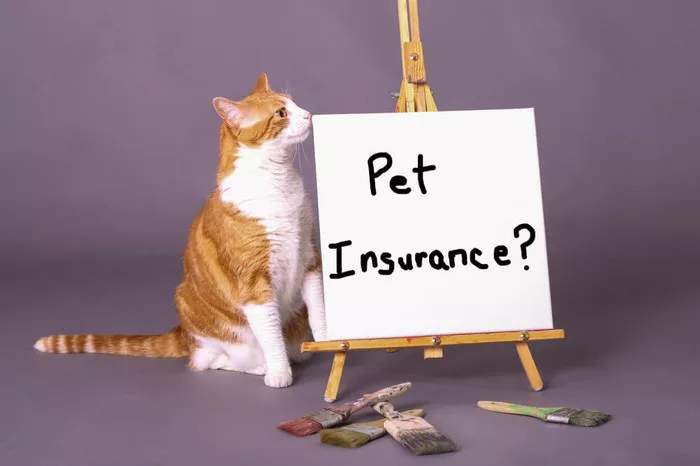As a pet owner, you want to provide the best care for your furry friend, but accidents and illnesses can happen unexpectedly. Pet insurance can help ease the financial burden of veterinary bills by covering some or all of the costs of your pet’s medical care. However, with different types of pet insurance available, it can be overwhelming to decide which plan is right for you and your pet.
In this article, we’ll break down the various types of pet insurance policies, what each one covers, and how to choose the best option for your pet. Whether you’re a first-time pet owner or you’re looking to update your current coverage, understanding these options will help you make an informed decision.
Why Should You Get Pet Insurance?
Pets are family, and just like humans, they need healthcare. The cost of veterinary services can add up quickly, especially if your pet faces an unexpected accident, illness, or surgery. Pet insurance helps alleviate these costs by reimbursing you for a portion of the medical expenses your pet incurs.
There are several different types of pet insurance plans to choose from. Each has its own benefits and coverage limits. Choosing the right type of insurance for your pet depends on factors such as their age, breed, health condition, and your budget. Let’s dive into the main types of pet insurance to help you understand which one may work best for your pet.
What Are the Different Types of Pet Insurance?
Pet insurance typically falls into four categories: accident-only coverage, accident and illness coverage, wellness coverage, and comprehensive plans. Each type offers different levels of protection and coverage for your pet’s healthcare needs.
1. Accident-Only Pet Insurance
Accident-only pet insurance is the most basic type of coverage. As the name suggests, this plan only covers accidents—such as injuries from car accidents, falls, bites, or other traumatic events. It doesn’t cover illnesses, preventative care, or routine health services.
What Does Accident-Only Insurance Cover?
Trauma or injury: Broken bones, cuts, bruises, and abrasions caused by accidents.
Bite wounds or fights: Injuries caused by other animals or accidents.
Accidental poisoning: Coverage for accidents involving toxic substances or poisoning.
What It Doesn’t Cover:
Illnesses: It will not cover conditions like infections, cancer, or chronic diseases.
Preventative care: This type of policy does not cover vaccinations, flea treatments, or routine checkups.
Why Choose Accident-Only Insurance?
Affordable: Because accident-only plans are limited in coverage, they tend to be less expensive than more comprehensive plans.
Good for active pets: If your pet is prone to accidents (such as active dogs or outdoor pets), this could be a good, budget-friendly option.
2. Accident and Illness Pet Insurance
Accident and illness pet insurance is the most popular type of pet insurance. This plan covers both accidents and a wide range of illnesses, including infections, allergies, and chronic conditions like arthritis or diabetes. It is a more comprehensive option compared to accident-only coverage.
What Does Accident and Illness Insurance Cover?
Accidents: Coverage for injuries from accidents, such as broken bones or injuries caused by falls or car accidents.
Illnesses: Includes a wide range of illnesses like infections, cancer, digestive issues, skin problems, and heart disease.
Chronic conditions: Coverage for long-term or ongoing medical needs, such as treatment for diabetes or arthritis.
Emergency care: Coverage for urgent care needs, including hospitalization and surgery following an accident or illness.
What It Doesn’t Cover:
Routine care: Preventative treatments like vaccinations, flea and tick prevention, and annual wellness exams are not included.
Pre-existing conditions: Most pet insurance providers do not cover health conditions that were present before purchasing the policy.
Why Choose Accident and Illness Insurance?
Comprehensive coverage: This option is perfect for pets who may need both accident and illness care. It offers peace of mind, knowing your pet’s unexpected health costs will be covered.
Flexibility: It covers a wide range of medical issues, making it suitable for pets of various ages and health conditions.
3. Wellness Pet Insurance (Preventative Care)
Wellness pet insurance focuses on covering routine and preventative care for your pet. It is often offered as an add-on or supplementary policy to an accident and illness plan. While it doesn’t cover injuries or illnesses, it helps you save money on regular, preventive veterinary visits.
What Does Wellness Insurance Cover?
Vaccinations: Coverage for routine vaccinations to prevent common diseases.
Flea and tick prevention: Helps cover treatments to keep pests off your pet.
Routine checkups: Covers wellness exams that monitor your pet’s overall health.
Dental care: Some wellness plans offer dental cleaning services to maintain your pet’s oral health.
Parasite control: Coverage for treatments to prevent heartworms, worms, or other internal parasites.
What It Doesn’t Cover:
Accidents or illnesses: Wellness plans do not provide coverage for unexpected injuries or health issues.
Chronic conditions: Ongoing illnesses are not covered under wellness insurance.
Why Choose Wellness Insurance?
Preventive care: Wellness coverage helps ensure your pet stays healthy by covering essential routine treatments.
Cost-effective: It’s a great option for pet owners who want to stay on top of their pet’s health without paying out-of-pocket for regular care.
Complementary coverage: It pairs well with accident and illness insurance, giving you full protection for your pet’s medical needs.
4. Comprehensive Pet Insurance
Comprehensive pet insurance is a combination of accident and illness coverage along with wellness care. This is the most complete type of pet insurance, as it covers not only emergency care, illnesses, and injuries but also preventative care. Comprehensive plans vary by insurer but generally offer extensive protection for your pet’s health.
What Does Comprehensive Insurance Cover?
Accidents: Coverage for injuries due to accidents such as car crashes or falls.
Illnesses: It covers a wide range of illnesses, including chronic conditions like arthritis or diabetes.
Wellness care: Routine treatments like vaccinations, dental cleanings, and flea/tick prevention.
Emergency and hospitalization: Coverage for emergency medical situations, surgeries, and aftercare.
What It Doesn’t Cover:
Pre-existing conditions: As with other plans, comprehensive insurance does not cover health issues your pet had before signing up.
Cosmetic treatments: Non-medical treatments, such as grooming or elective surgeries, are typically excluded.
Why Choose Comprehensive Insurance?
Complete coverage: This plan gives you the peace of mind that your pet’s health will be covered no matter the situation, whether it’s a routine visit or an emergency.
Convenience: Instead of juggling multiple plans, comprehensive insurance combines accident, illness, and wellness care into one policy.
How to Choose the Right Pet Insurance for Your Pet
Choosing the best pet insurance plan depends on your pet’s individual needs, your budget, and what type of care you want to provide. Here are some key factors to consider when choosing a policy:
Pet’s Age and Health: Older pets or those with pre-existing health conditions may require more extensive coverage, such as accident and illness plans. Wellness insurance might be beneficial for younger pets who are still healthy.
Your Budget: Premiums for pet insurance can vary widely. Accident-only insurance is typically the least expensive, while comprehensive plans can cost more. Consider your budget and how much you’re willing to spend on premiums.
Your Pet’s Lifestyle: If your pet is very active or has a higher risk of injury, accident-only or accident and illness insurance may be more suitable. If your pet stays mostly indoors or is generally low-risk, a more basic policy might suffice.
Provider Reputation: Not all pet insurance providers are the same. Look for a provider with good customer service, a clear claims process, and positive reviews from other pet owners.
Conclusion
Pet insurance is a smart way to protect your pet and your finances. The type of insurance plan you choose will depend on your pet’s health needs and your budget. Whether you opt for accident-only coverage, accident and illness plans, wellness coverage, or a comprehensive policy, there’s an option that’s right for you and your furry friend.
By understanding the different types of pet insurance, you can make an informed decision that will give you peace of mind, knowing that your pet is covered in case of an emergency or illness.
Related topic:




















